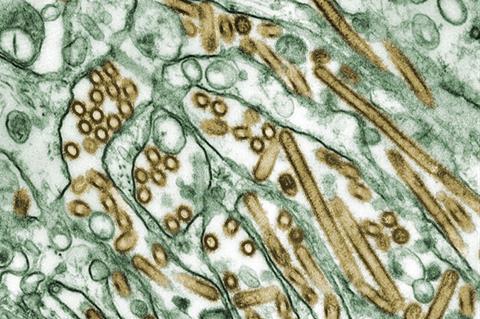Texas Tech University’s Biological Threat Research Laboratory (BTRL) played a key role in detecting the first case of highly pathogenic avian influenza (HPAI) A (H5N1) transmitted from a mammal - a dairy cow - to a human.

The case was made public in an article published in the New England Journal of Medicine. Steve Presley, the director of The Institute of Environmental and Human Health (TIEHH) and the BTRL, and Cynthia Reinoso Webb, the biological threat coordinator at TIEHH, were co-authors on the journal publication.
The journal article explains that in March a farm worker who reported no contact with sick or dead birds, but who was in contact with dairy cattle, began showing symptoms in the eye and samples were collected by the regional health department to test for potential influenza A.
Initial testing of the samples was performed at the BTRL, which is a component of the Centers for Disease Control and Prevention (CDC) Laboratory Response Network-Biological (LRN-B) located at TIEHH.
Significant moment
“It’s a huge thing that the virus has jumped from birds to mammals, dairy cows in this case, and then to humans,” Presley said. “That’s why this paper in the New England Journal of Medicine is very significant. It’s going to lay the foundation, I believe, for a lot of research in the future of how the virus is evolving.”
The involvement of Texas Tech’s BTRL is a continuation of the partnership between regional, state and federal public health partners.
“Being part of the CDC LRN-B, we have the standing capability to test for a lot of biological threats and some that are considered emergent,” Reinoso Webb explained.
The lab’s standby status allowed Reinoso Webb and the Texas Tech BTRL team to respond quickly to the needs of the regional public health authority. Knowing the potential dangers of the virus, Reinoso Webb pushed the testing into the safest laboratory available, and the team went to work.
Results within hours
Having received the samples in the early evening, results were being reported to regional, state and federal levels within hours. By the next day the samples were on their way to the CDC for further testing and confirmation.
“We were on the phone with the CDC until around midnight discussing different scenarios and follow up requirements,” Reinoso Webb said. “There is a lot of federal reporting. It was a very complicated case, even though it was two samples and one patient.
“But we had this wonderful communication with the CDC and made sure we did everything by the book. This is how it’s been structured, and this is how the communication was supposed to happen.”







No comments yet